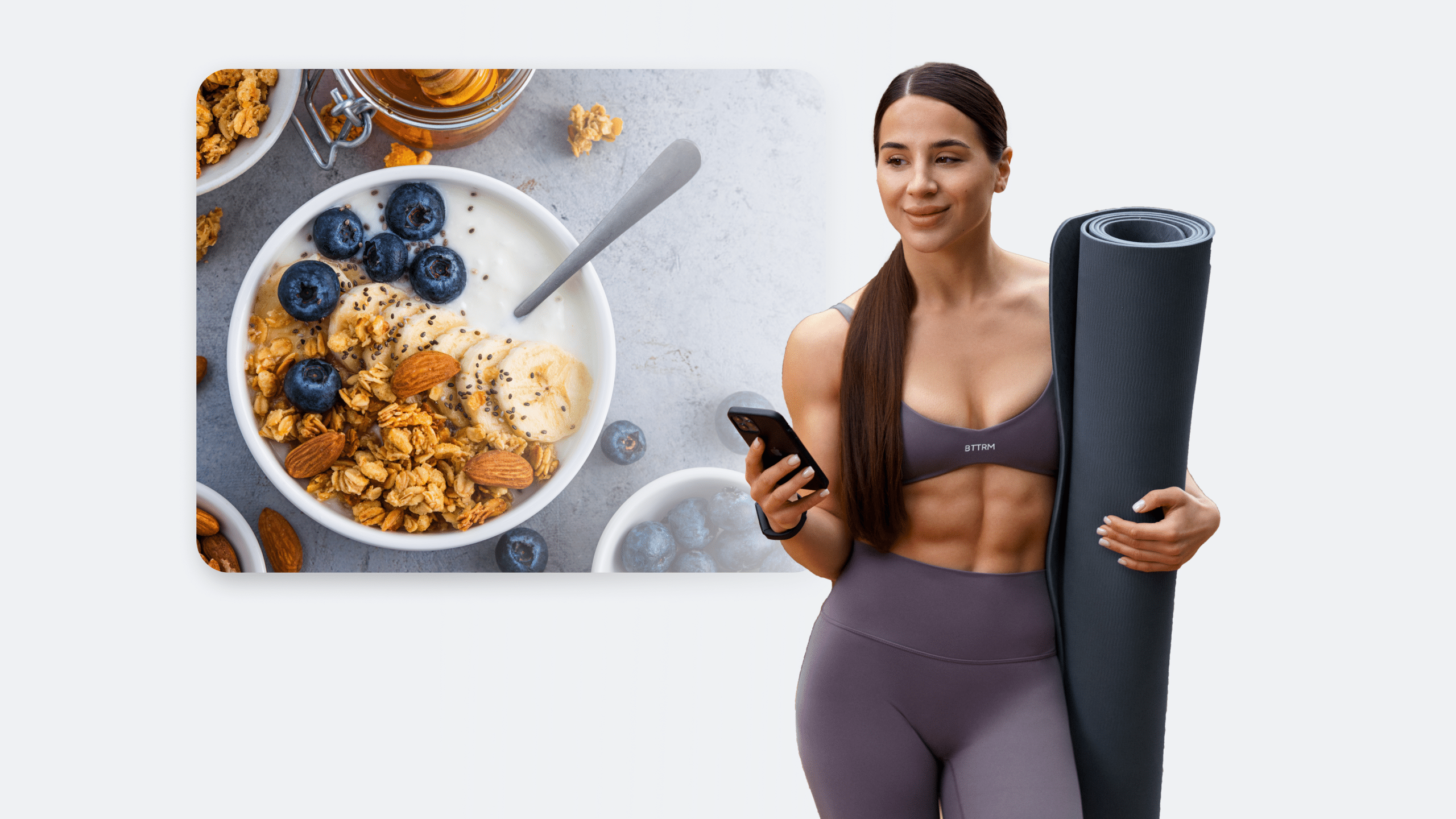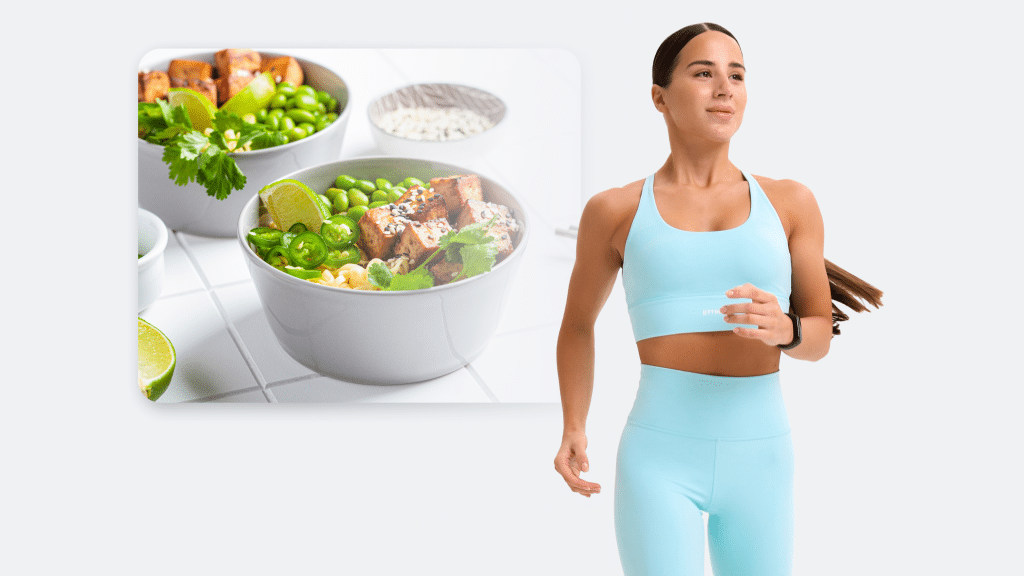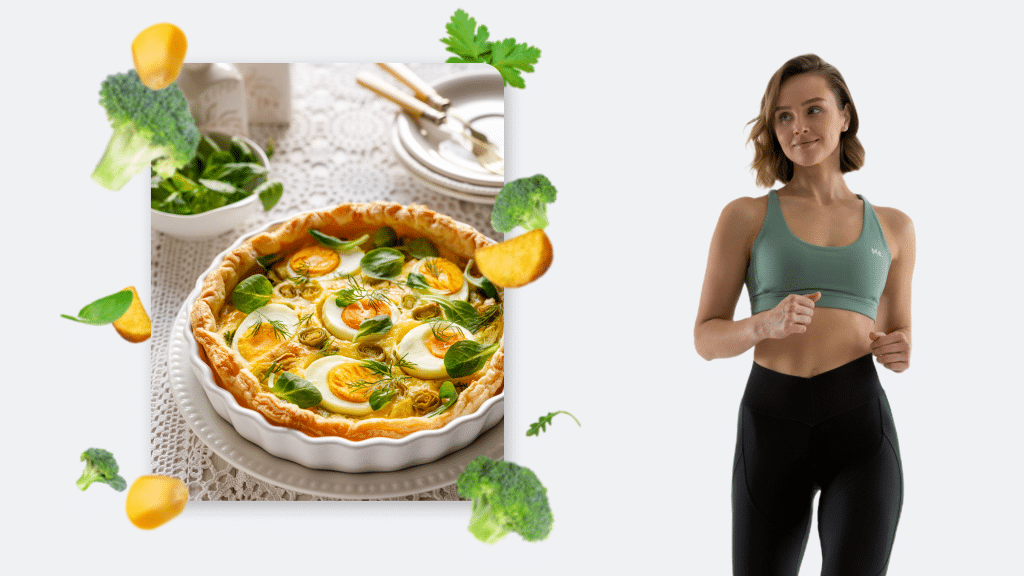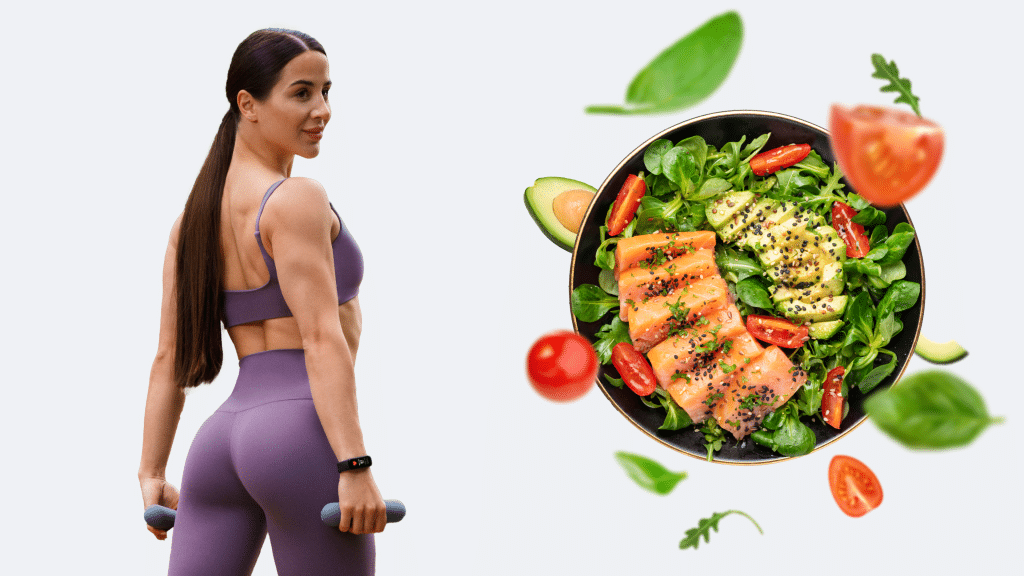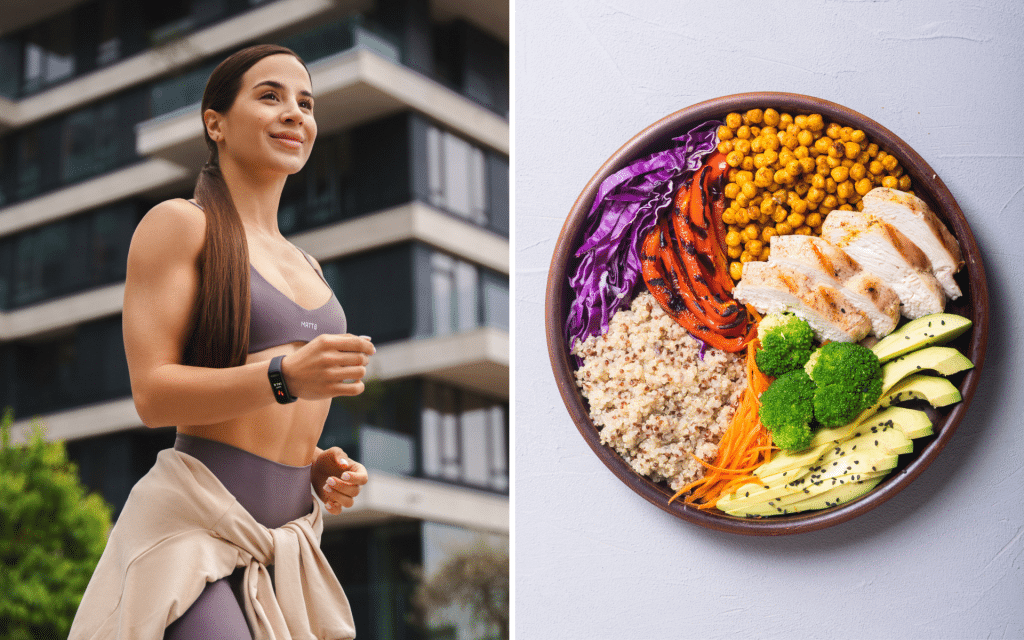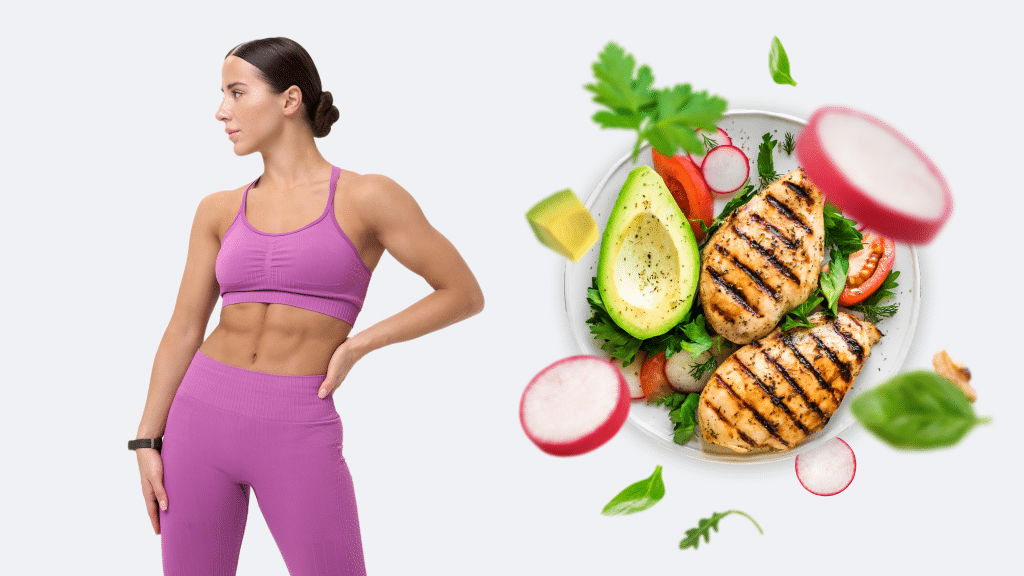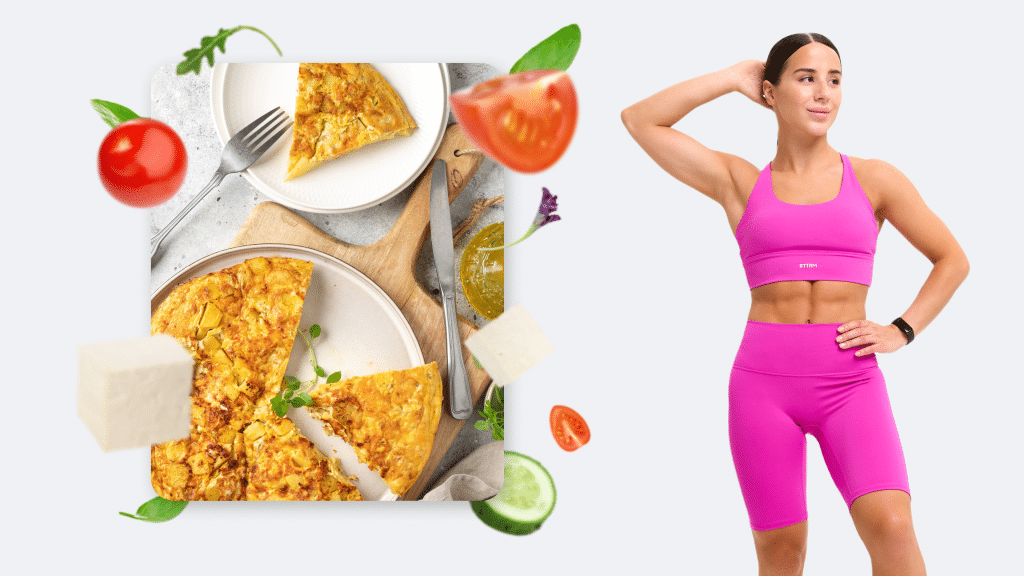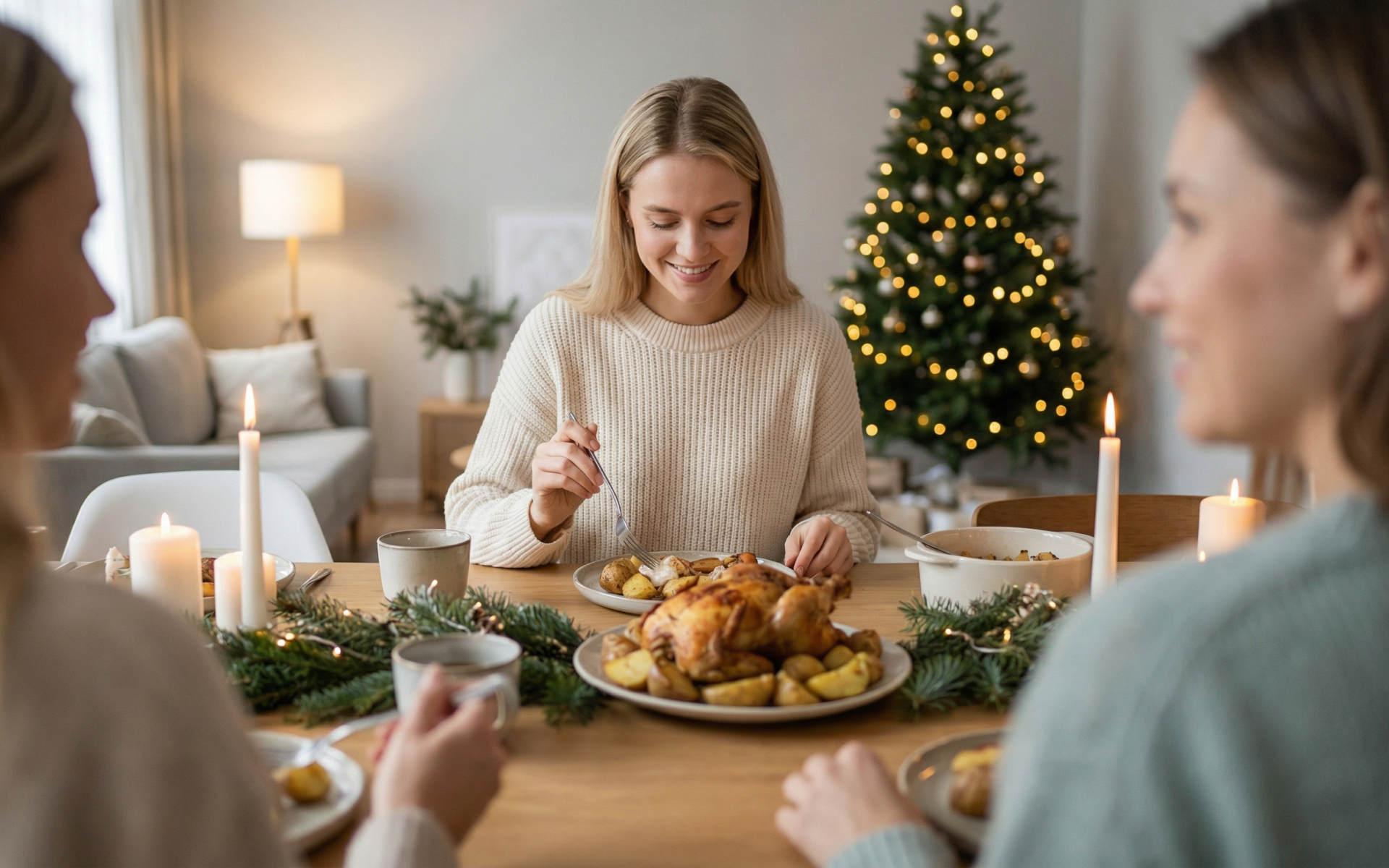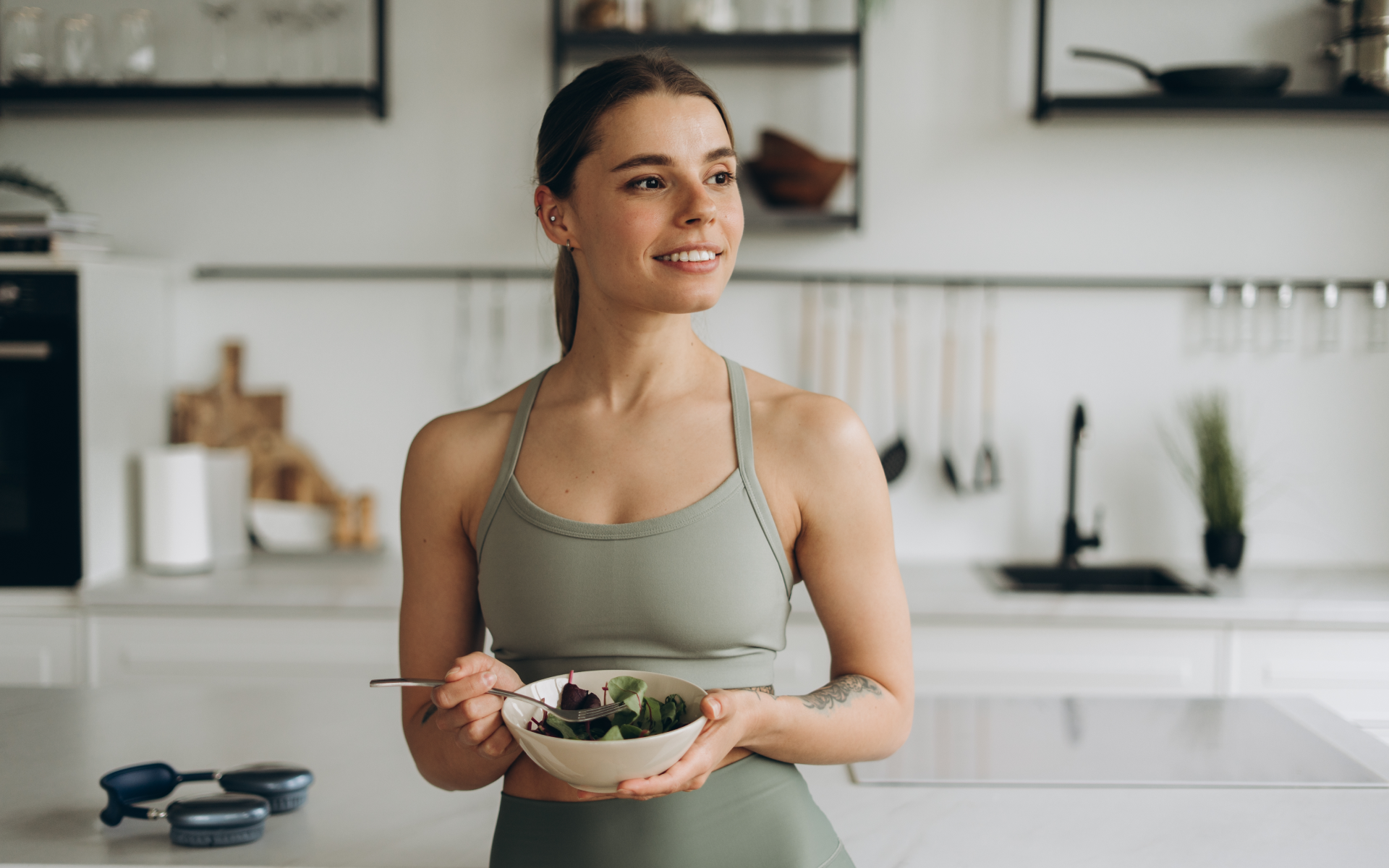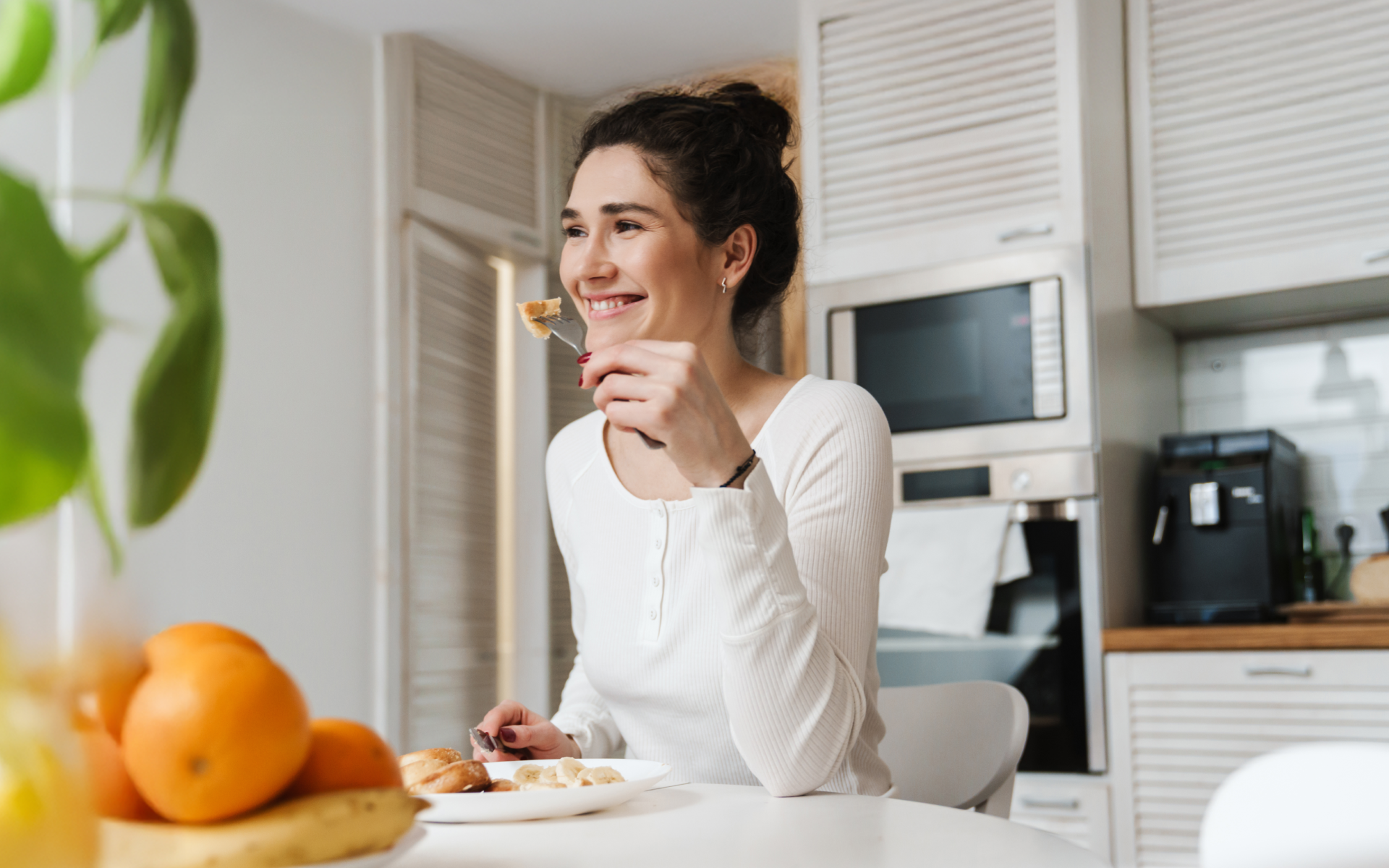Many weight loss diets share a common goal: to reduce calorie intake, forcing the body to burn stored fat for energy.
However, reducing calories means sacrificing the protein intake that preserves lean muscle mass and keeps you feeling full. Not feeling full can lead to feelings of deprivation, fatigue, and difficulty sticking to a diet long-term.
To overcome this challenge, many dietitians recommend the combination of low calorie and high protein diet meals for effective weight loss. This type of meal plan allows you to enjoy a variety of foods while still achieving your weight loss goals.
So here are some tips on creating the best low calorie high protein meal plan for weight loss.
What is a Low Calorie High Protein Meal Plan?
A low calorie high protein meal plan focuses on consuming meals that are both low in calories and high in protein. The goal is to reduce overall calorie consumption while maintaining or increasing protein intake.
Typically, these diets involve eating meals that derive around 25-35% of their calories from protein. This macronutrient balance helps to keep you feeling satisfied and energized while promoting weight loss (1).
There’s no set calorie limit for a low calorie high protein meal plan, as it will vary depending on individual needs and goals.
Before deciding on a specific calorie and protein intake, use a calorie calculator to determine your basal metabolic rate (BMR) and adjust according to your activity level and weight loss goals.
Consider consulting a registered dietitian to help create a personalized meal plan that meets your needs and preferences.
Here’s a sample 5-day low calorie high protein meal plan to start.
Enjoy the 2 low calorie high protein snacks to keep your daily energy levels up.
When it comes to weight loss, progress is made by inches, not miles, so it’s much harder to track and a lot easier to give up. The BetterMe: Health Coaching app is your personal trainer, nutritionist, and support system all in one. Start using our app to stay on track and hold yourself accountable!
You can adjust the serving sizes as needed to meet your calorie target:
Day 1
- Breakfast: Scrambled Eggs with Spinach (2 eggs, 1 cup spinach) [200 calories, 18g protein]
- Snack 1: Greek Yogurt with Honey (1 cup non-fat Greek yogurt, 1 tbsp honey) [180 calories, 15g protein]
- Lunch: Grilled Chicken Salad (4 oz chicken breast, mixed greens, vinaigrette) [350 calories, 30g protein]
- Snack 2: Almonds (¼ cup) [200 calories, 8g protein]
- Dinner: Baked Salmon with Asparagus (4 oz salmon, 1 cup asparagus) [400 calories, 35g protein]
Daily Total: 1,330 calories, 106g protein
Day 2
- Breakfast: Omelette with Cheese and Tomato (2 eggs, 1 oz cheese, 1 tomato) [250 calories, 20g protein]
- Snack 1: Protein Shake (1 scoop protein powder, water) [120 calories, 24g protein]
- Lunch: Turkey Wrap (4 oz turkey breast, whole wheat wrap, lettuce, mustard) [350 calories, 28g protein]
- Snack 2: Cottage Cheese with Pineapple (1 cup low-fat cottage cheese, ½ cup pineapple) [180 calories, 15g protein]
- Dinner: Grilled Shrimp with Quinoa (6 oz shrimp, ½ cup quinoa) [400 calories, 35g protein]
Daily Total: 1,300 calories, 122g protein
Day 3
- Breakfast: Smoked Salmon on Whole Grain Toast (2 oz salmon, 1 slice toast) [220 calories, 18g protein]
- Snack 1: Boiled Eggs (2 eggs) [140 calories, 12g protein]
- Lunch: Beef Stir-Fry (4 oz lean beef, 1 cup mixed vegetables) [350 calories, 30g protein]
- Snack 2: String Cheese and Apple [150 calories, 8g protein]
- Dinner: Chicken Breast with Broccoli (5 oz chicken, 1 cup broccoli) [340 calories, 33g protein]
Daily Total: 1,200 calories, 101g protein
Day 4
- Breakfast: Turkey Bacon and Egg Sandwich (2 slices turkey bacon, 1 egg, whole grain English muffin) [300 calories, 20g protein]
- Snack 1: Protein Bar [200 calories, 20g protein]
- Lunch: Tuna Salad (1 can tuna, lettuce, 1 tbsp mayo) [350 calories, 30g protein]
- Snack 2: Mixed Nuts (¼ cup) [200 calories, 8g protein]
- Dinner: Pork Tenderloin with Green Beans (4 oz pork, 1 cup green beans) [350 calories, 30g protein]
Daily Total: 1,400 calories, 108g protein
Day 5
- Breakfast: Egg White Omelette with Peppers (3 egg whites, 1/2 cup peppers) [150 calories, 18g protein]
- Snack 1: Turkey Jerky (2 oz) [140 calories, 20g protein]
- Lunch: Chicken Caesar Salad (4 oz chicken, romaine, Caesar dressing) [360 calories, 30g protein]
- Snack 2: Peanut Butter on Celery (2 tbsp peanut butter, 3 celery sticks) [200 calories, 8g protein]
- Dinner: Grilled Cod with Spinach (5 oz cod, 1 cup spinach) [350 calories, 35g protein]
Daily Total: 1,200 calories, 111g protein
Read more: Vegan Keto Diet: Exploring a Plant-Based Approach to Low-Carb Living
Vegetarians can also have low calorie high protein meals, with options such as:
- Tofu
- Tempeh
- Legumes
- Dairy products like Greek yogurt and cottage cheese
Here’s a sample low calorie high protein meal plan vegetarian (lacto-ovo):
Day 1
- Breakfast: Spinach and Feta Omelette (2 egg whites, 1 whole egg, 1/4 cup feta, 1 cup spinach) [220 calories, 27g protein]
- Snack 1: Greek Yogurt with Berries (1 cup non-fat Greek yogurt, ½ cup mixed berries) [150 calories, 15g protein]
- Lunch: Chickpea Salad (1 cup chickpeas, 1 cup cherry tomatoes, ½ cucumber, lemon dressing) [350 calories, 20g protein]
- Snack 2: Almonds (¼ cup) [200 calories, 8g protein]
- Dinner: Grilled Tofu Stir-Fry (1/2 cup tofu, 1 cup mixed vegetables, soy sauce) [320 calories, 25g protein]
Daily Total: 1,240 calories, 95g protein
Day 2
- Breakfast: Oatmeal with Protein Powder (½ cup oats, 1 scoop protein powder, 1 tbsp almond butter) [300 calories, 25g protein]
- Snack 1: Hummus and Veggie Sticks (2 tbsp hummus, 1 cup assorted veggie sticks) [130 calories, 5g protein]
- Lunch: Lentil Soup (1.5 cups) [300 calories, 18g protein]
- Snack 2: Cottage Cheese with Pineapple (1 cup low-fat cottage cheese, ½ cup pineapple) [180 calories, 15g protein]
- Dinner: Quinoa and Black Bean Bowl (1/2 cup quinoa, 1/2 cup black beans, ½ avocado) [340 calories, 20g protein]
Daily Total: 1,250 calories, 83g protein
Day 3
- Breakfast: Smoothie (1 banana, 1 cup spinach, 1 scoop protein powder, 1 cup almond milk) [250 calories, 20g protein]
- Snack 1: Hard-Boiled Eggs (2 eggs) [140 calories, 12g protein]
- Lunch: Grilled Vegetable Wrap (1 whole wheat wrap, 1 cup grilled veggies, 2 tbsp hummus) [350 calories, 15g protein]
- Snack 2: Edamame (1 cup) [120 calories, 12g protein]
- Dinner: Stuffed Bell Peppers (2 peppers, stuffed with ½ cup quinoa, ½ cup lentils) [300 calories, 25g protein]
Daily Total: 1,160 calories, 84g protein
Day 4
- Breakfast: Avocado Toast (1 slice whole grain bread, ½ avocado, 1 boiled egg) [250 calories, 12g protein]
- Snack 1: Protein Bar [200 calories, 20g protein]
- Lunch: Couscous Salad with Chickpeas (½ cup couscous, 1 cup chickpeas, 1/2 cup diced cucumber) [350 calories, 18g protein]
- Snack 2: String Cheese and Apple [150 calories, 8g protein]
- Dinner: Vegetable Stir-Fry with Tempeh (½ cup tempeh, 1 cup mixed vegetables) [300 calories, 25g protein]
Daily Total: 1,250 calories, 83g protein
Day 5
- Breakfast: Chia Seed Pudding (3 tbsp chia seeds, 1 cup almond milk, ½ tsp vanilla, 1 tbsp honey) [250 calories, 10g protein]
- Snack 1: Pumpkin Seeds (¼ cup) [180 calories, 9g protein]
- Lunch: Spinach and Ricotta Stuffed Shells (3 shells) [320 calories, 18g protein]
- Snack 2: Carrot and Celery Sticks with Peanut Butter (2 tbsp peanut butter) [200 calories, 8g protein]
- Dinner: Mushroom and Lentil Stew (1 cup) [300 calories, 20g protein]
Daily Total: 1,250 calories, 65g protein
Want to spring-clean your diet, skyrocket your self-confidence, and shatter your insecurities? Check out the BetterMe: Health Coaching app and set this plan in motion!
Key Pointers for Following the Meal Plans:
- Your serving sizes should depend on your specific calorie and protein needs. Use a food scale or measuring cups to ensure accurate portions.
- The calorie and protein counts are estimates, as they vary based on brands and cooking methods. Type your ingredients into a calorie and macro tracking app for more precise calculations.
- Feel free to swap out any meals or snacks with similar options from previous days, or anything roughly equivalent in calories and protein.
- Make substitutions or switch ingredients to suit your taste preferences and dietary restrictions.
- Hydrate with water throughout the day, and aim to drink at least 8 glasses.
- Incorporate physical activity into your routine for best results.
What Food Is Highest in Protein and Lowest in Calories?
The food that is highest in protein and lowest in calories is typically lean protein sources.
By lean, we mean lower in fat content (2).
These foods include:
- Eggs
- Turkey breast
- Chicken breast
- Fish (such as cod, tilapia, and tuna)
- Low-fat cottage cheese and greek yogurt
Some plant-based sources of protein that are also low in calories include:
- Tofu, tempeh, and seitan
- Legumes (lentils, black beans, chickpeas)
- Quinoa and other whole grains
- Edamame
There are even high protein fruits, such as:
- Kiwi
- Cherries
- Bananas
- Apricots
- Guava
- Jackfruit (3)
How high or low calorie a protein food is can also depend on how it’s cooked. For example, a grilled skinless chicken breast will have fewer calories than a fried chicken fillet.
Setting up your plate will also determine the calorie and protein content. For example, a salad topped with grilled chicken will have fewer calories than a sandwich with the same amount of chicken.
Not all high protein foods are low in calories. Foods like nuts, seeds, and full-fat dairy products can be high in protein and calories, so they should be consumed in moderation when following a low calorie high protein meal plan.
What Are the 5 Protein Super Foods for Weight Loss?
There are many different low-calorie high-protein foods for weight loss. However, some foods are “super foods” for their high protein content and other beneficial nutrients.
- Quinoa: This whole grain is a complete protein, containing all nine essential amino acids (4). It’s also high in fiber and can be an excellent meal base.
- Greek Yogurt: This dairy product is rich in protein and probiotics, aiding digestion and promoting a feeling of fullness (5), making it a great snack or breakfast option.
- Chicken Breast: Lean and versatile, chicken breast is a staple for weight loss diets due to its high protein content and low fat.
- Lentils: A fantastic plant-based protein source, lentils are also high in fiber (6). This combination can help regulate blood sugar levels and promote satiety (7).
- Salmon: Rich in omega-3 fatty acids, salmon is a great source of protein. The meat supports heart health (8) and aids in weight loss by promoting feelings of fullness (9).
Note that these foods are not the only ones that can contribute to weight loss. A well-rounded diet should include a variety of nutrient-dense foods, including fruits, vegetables, whole grains, and lean proteins (10). It’s also important to consider portion sizes and overall calorie intake on a weight loss journey.
Which Protein Is Best for Belly Fat Loss?
When it comes to losing belly fat, the focus should be on overall fat loss and maintaining lean muscle mass, rather than targeting belly fat specifically. However, specific protein sources can be particularly effective in supporting weight loss and fat reduction.
Foods like chicken breast, turkey, and fish are high in protein and low in fat and calories, making them excellent choices for reducing overall body fat.
Getting protein from whole food sources rather than processed meats is best. Options like pea or soy protein are great for plant-based diets. They are effective in promoting satiety and muscle maintenance.
The key to using protein for belly fat loss is incorporating it into a balanced diet that includes regular physical activity (11).
Can You Lose Weight on A High Protein Low Calorie Diet?
Recent research on low-calorie, high-protein meal plans shows promising weight loss and maintenance results (12). Researchers note these diets’ ability to improve satiety and preserve lean body mass during periods of calorie restriction (13).
Here are some key insights from recent studies:
Protein and Satiety
Scientists have seen these high-protein diets increase the feeling of fullness more effectively than low-fat or low-carbohydrate diets (14). This increase in satiety can reduce overall calorie intake, which is crucial for weight loss.
The thermic effect of protein, which is the increased energy expenditure required to metabolize it, also contributes to weight loss (15).
Preservation of Lean Body Mass
One of the significant benefits of high-protein diets is their ability to help preserve lean body mass during weight loss (16). This preservation benefit is substantial because maintaining muscle mass can help prevent metabolic slowdown and support ongoing calorie burning.
Comparison with Other Diets
High-protein diets are as effective, if not more so, than low-fat and low-carbohydrate diets for weight loss. While low-carb diets often lead to quick initial weight loss due to water loss, high-protein diets usually result in more sustainable fat loss over time.
Studies also suggest that high-protein diets might be better at preventing weight regain than other diets (17).
How Much Protein Should You Eat to Lose Weight?
Scientists recommend consuming about 1.2 to 1.6 grams of protein per kilogram of body weight per day to lose weight effectively (18). This range helps preserve lean muscle mass and promote satiety, which can reduce overall calorie intake.
For someone weighing 70 kg (about 154 lbs), this would translate to approximately 84 to 112 grams of protein daily.
Adjusting protein intake based on individual needs, activity levels, and specific weight loss goals is essential. Consulting with a registered dietitian can provide personalized guidance.
Eating just 500 calories a day is not recommended due to the risk of nutritional deficiencies. However, to maximize fullness on any reduced-calorie diet, focus on high-fiber, high-water-content foods such as vegetables. Include lean proteins like chicken or tofu. Drinking water and eating slowly can also help you feel more satisfied for longer (19) (20). To start losing weight in 7 days, focus on creating a calorie deficit through a combination of a low-calorie diet and increased physical activity. Prioritize lean proteins, vegetables, and whole grains while reducing ultra-processed foods and added sugars. Sustainable weight loss is generally slow and steady, around 1-2 pounds per week (21). There are no zero-calorie foods. However, some foods like celery, cucumbers, and leafy greens are very low in calories. The energy required to digest them nearly equals the calories they provide (22). Surviving 800 calories a day long-term is not sustainable or healthy for most people. It can lead to malnutrition and loss of muscle mass (23). Extreme low-calorie diets should only be followed under medical supervision, typically when treating obesity under specific clinical conditions.Frequently Asked Questions
How to eat 500 calories a day and feel full?
How to lose weight in 7 days?
What foods are zero calories?
Can you survive on 800 calories a day?
The Bottom Line
The best low calorie high protein meal plan for weight loss provides a strategic approach to achieving your goals by combining the benefits of low-calorie intake with the satisfying power of high-protein foods. By following the detailed sample meal plans for non-vegetarian and vegetarian diets, you can enjoy a variety of delicious foods that help maintain muscle mass and curb hunger.
DISCLAIMER:
This article is intended for general informational purposes only and does not serve to address individual circumstances. It is not a substitute for professional advice or help and should not be relied on for making any kind of decision-making. Any action taken as a direct or indirect result of the information in this article is entirely at your own risk and is your sole responsibility.
BetterMe, its content staff, and its medical advisors accept no responsibility for inaccuracies, errors, misstatements, inconsistencies, or omissions and specifically disclaim any liability, loss or risk, personal, professional or otherwise, which may be incurred as a consequence, directly or indirectly, of the use and/or application of any content.
You should always seek the advice of your physician or other qualified health provider with any questions you may have regarding a medical condition or your specific situation. Never disregard professional medical advice or delay seeking it because of BetterMe content. If you suspect or think you may have a medical emergency, call your doctor.
SOURCES:
- Clinical Evidence and Mechanisms of High-Protein Diet-Induced Weight Loss (2020, ncbi.nlm.nih.gov)
- High-protein foods: The best protein sources to include in a healthy diet (2023, health.harvard.edu)
- 12 High-Protein Fruits to Add to Your Diet (2024, purewow.com)
- Nutritional and Functional New Perspectives and Potential Health Benefits of Quinoa and Chia Seeds (2023, ncbi.nlm.nih.gov)
- Beneficial Effects of Yoghurts and Probiotic Fermented Milks and Their Functional Food Potential (2022, ncbi.nlm.nih.gov)
- Health-promoting benefits of lentils: Anti-inflammatory and anti-microbial effects (2024, ncbi.nlm.nih.gov)
- Optimising foods for satiety (2015, sciencedirect.com)
- 7 Things To Know About Omega-3 Fatty Acids (n.d., nccih.nih.gov)
- Omega-3 fatty acids in obesity and metabolic syndrome: a mechanistic update (2018, ncbi.nlm.nih.gov)
- Diet & Weight Loss (2022, health.harvard.edu)
- Taking aim at belly fat (2024, health.harvard.edu)
- The role of protein in weight loss and maintenance (2015, sciencedirect.com)
- Higher protein intake during caloric restriction improves diet quality and attenuates loss of lean body mass (2022, ncbi.nlm.nih.gov)
- Revisiting the role of protein-induced satiation and satiety (2017, sciencedirect.com)
- Clinical Evidence and Mechanisms of High-Protein Diet-Induced Weight Loss (2020, ncbi.nlm.nih.gov)
- Preserving Healthy Muscle during Weight Loss (2017, sciencedirect.com)
- A Moderate-Protein Diet Produces Sustained Weight Loss and Long-Term Changes in Body Composition and Blood Lipids in Obese Adults (2019, sciencedirect.com)
- The role of protein in weight loss and maintenance (2015, sciencedirect.com)
- Effect of Pre-meal Water Consumption on Energy Intake and Satiety in Non-obese Young Adults (2018, ncbi.nlm.nih.gov)
- Slow Down: Behavioural and Physiological Effects of Reducing Eating Rate (2019, ncbi.nlm.nih.gov)
- Steps for Losing Weight | Healthy Weight and Growth (2023, cdc.gov)
- Here’s What You Really Should Know About ‘Negative-Calorie’ Foods, According to Experts (2021, sciencealert.com)
- Risks Associated With Excessive Weight Loss (2024, ncbi.nlm.nih.gov)
